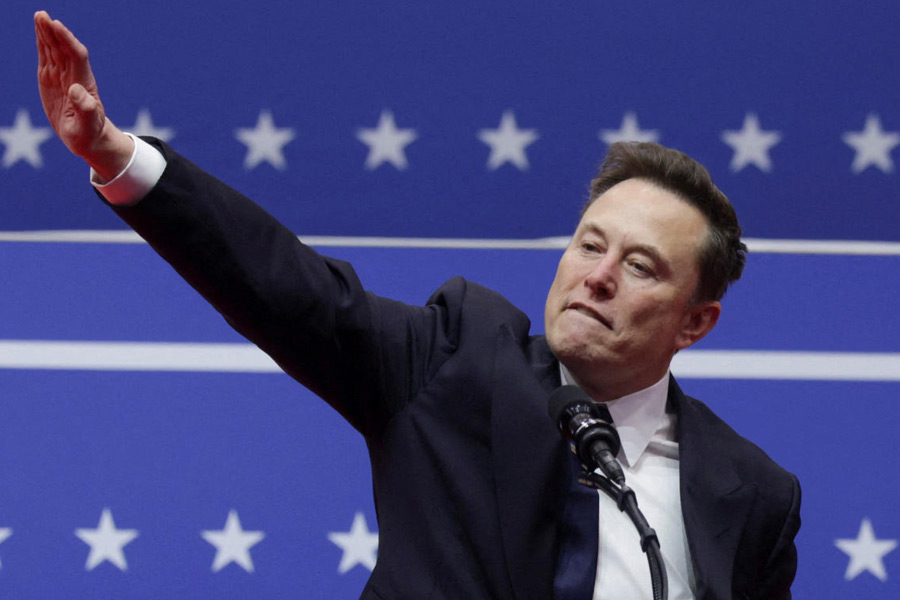Stagflation — the ugly term that signifies a deadly cocktail of high inflation, unemployment and low growth — has popped up in the Reserve Bank of India’s policymakers deliberations in its recent off-cycle meeting when they stunned markets and industry by raising the policy repo rate by 40 basis points to 4.40 per cent.
“Globally, stagflation could be transitioning from a risk scenario to a baseline scenario,” RBI deputy governor Michael Patra, a well-known monetary policy wonk said in his summation, according to a copy of the minutes of the meeting.
“The stagflationary shock is global but everywhere it is being exacerbated by country-specific factors in a synchronised way. The still raw scars of the pandemic will become even more excruciating to bear and more lasting,” Patra said, curiously echoing the sentiments of former US Federal Reserve chairman Ben Bernanke.
The RBI also raised the cash reserve ratio by 50 basis points to 4 per cent.
The minutes of the meeting released on Wednesday showed that retail inflation —currently riding at 7.79 per cent — dominated the discussions with members calling for a suitable monetary policy response to avoid any unintended shocks to the economy.
Patra’s fears are in line with those expressed by Bernanke and other experts who are warning that the US and other economies may have to wrestle with the risk of stagflation.
Speaking to CNBC on Monday, the former Fed chairman said the US central bank was late to react to the rise in US inflation, which is at a 40-year high, and this could see its economy facing stagflation.
After a monthly fund managers survey, Bank of America said that investors have ramped up their cash holdings to the highest level since September due to rising fears of stagflation. It said that some 77 per cent of the fund managers surveyed expect stagflation.
In India, the RBI has been criticised for being behind the curve till its surprise 40 basis points increase this month.
Analysts at Morgan Stanley had said the “geo-political tensions exacerbate external risks and impart a stagflationary impulse to the economy’’. However, RBI governor Shaktikanta Das had in March ruled out the possibility, arguing that India was far away from such a “grim prospect”.
Patra said that as long as the geopolitical crisis and retaliatory actions persist, inflation will also remain.
He however, added that the rise in prices is due to supply side factors like shortages and bottlenecks and not over-stimulated demand and in such circumstances monetary policy authorities are being forced to respond to an elevation in prices.
“In the absence of supply augmenting measures and/or easing of supply bottlenecks, they will do what they can do – front-load their actions, compress demand and render the recovery stillborn,” he adde.
The RBI deputy governor added that in such conditions, a measured approach and a cool head is warranted.
Patra said the Indian economy was not in a bad shape barring imported food and fuel inflation and its macro-economic fundamentals were still intact. However, the momentum of the recovery is still below full strength, warranting policy support.
Jayanth R. Varma, external member of the MPC, said the central bank needs to increase the policy interest rate by more than 100 basis points if it wants to tackle the inflation monster. He felt that the MPC had a lot of catching up to do as it persisted with its accommodative stance long after the pandemic had started to abate.
While analysts are expecting the committee to raise the repo rate again by up to 40 basis points in its June meeting, Varma had suggested a 50 basis points increase in the policy rate in the May 2-4 meeting while other members were in favour of a 40 basis point hike. Varma said the symbolic or psychological benefit of capping the increase below 50 basis points was outweighed by the simplicity and clarity of moving in round multiples of 25 basis points.
“Also reducing the hike by 10 basis points now would require an extra 10 basis point hike at some point,” he added. Varma, however, did not dissent with view of the others who plumped for a hike of 40 basis points.
The meeting saw Ashima Goyal calling for frontloading of rate hikes to prevent the real rate (inflation minus the nominal rate) becoming too negative while Governor Shaktikanta Das said the monetary policy actions was aimed at lowering inflation and anchoring inflation expectations, which would help to strengthen the medium-term growth prospects of the economy.










